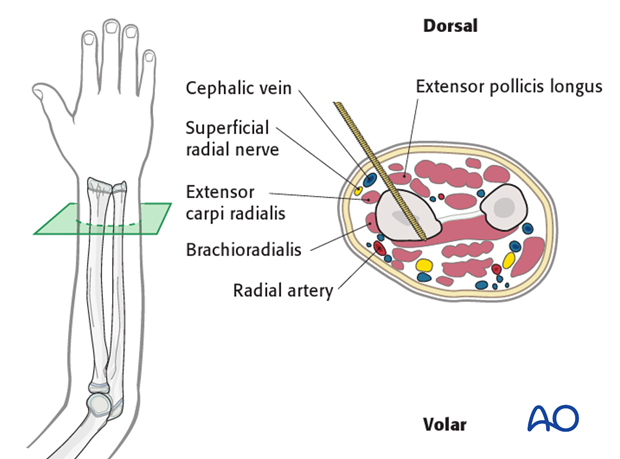Safe zones for pin placement in the pediatric radius
1. Introduction
Inserting percutaneous instrumentation through safe zones reduces the risk of damage to neurovascular structures and the physes.
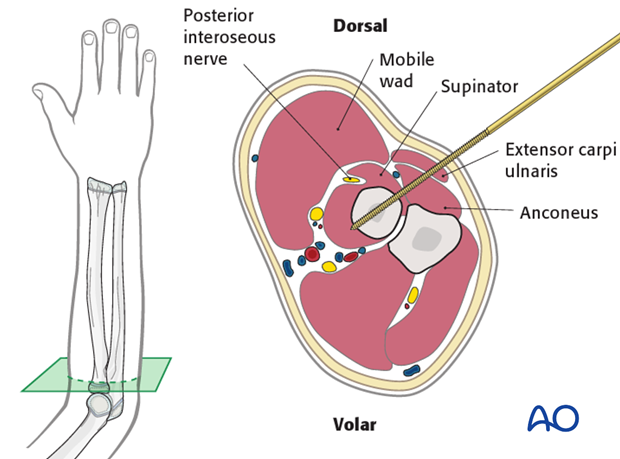
2. Anatomical considerations
The forearm anatomy is complex due to the presence of three major neurovascular bundles.
In particular:
- Radial nerve with its two branches, the posterior interosseous nerve (or deep branch of the radial nerve) and the superficial radial nerve
- Brachial artery
- Radial artery
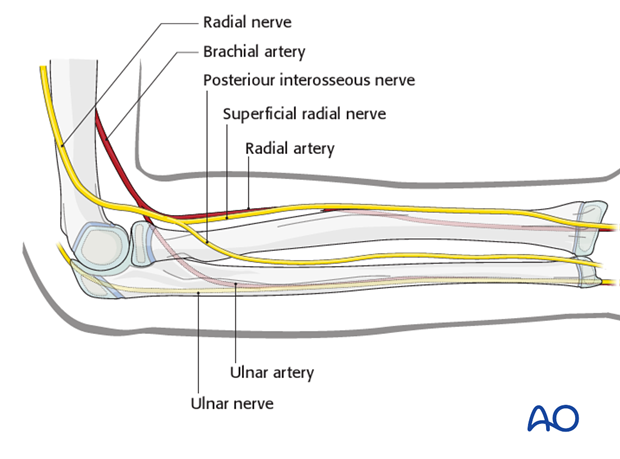
- Median nerve
- Ulnar nerve
- Ulnar artery
Except for the radial nerve, all previously mentioned structures run in the flexor compartment anteriorly.
Note: the cephalic vein runs parallel to the superficial radial nerve in the distal part of the forearm.
Pitfall: The more proximal the surgical field, the greater the risk of damage to important structures.
Pin insertion is usually via the posterolateral aspect of the radius. Avoid anterior pin insertion.
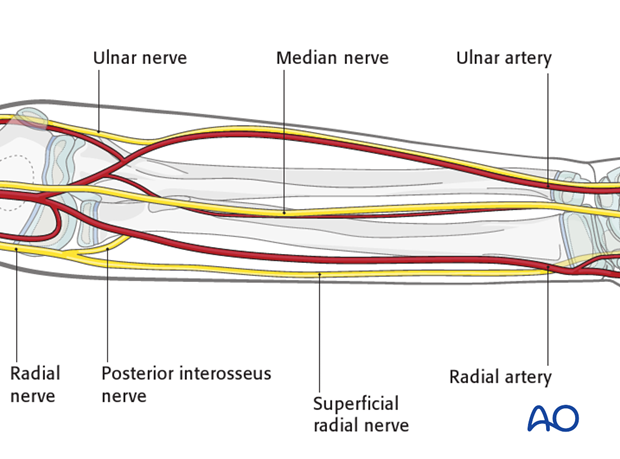
Forearm position
The anatomical relationships are complex because they depend on the position of the hand (rotational orientation). For pin insertion in both radius and ulna, the neutral position of the hand is most often used.
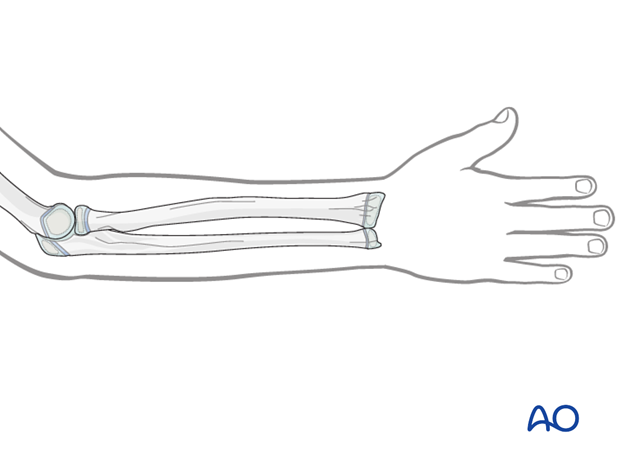
Skin and soft-tissue protection
Pins should be inserted at sites where the soft-tissue envelope is as thin as possible and between muscle compartments, not through them.
3. Safe zone in the proximal radius
The most critical structure in the proximal 1/3 of the radius is the supinator muscle with perforation of the posterior interosseous nerve (deep branch of the radial nerve).
Plan the dissection for the pin distal to the radial neck and passing between the extensor carpi ulnaris muscle and the mobile wad, penetrating the supinator muscle.
Make a 1-2 cm skin incision over the site of pin insertion.
Use an artery clip for blunt dissection down to the bone, protecting important anatomical structures with small retractors.
Depending on the length of the proximal fragment, position the distal pin distal to the insertion of the supinator. This pin is also inserted under direct vision.
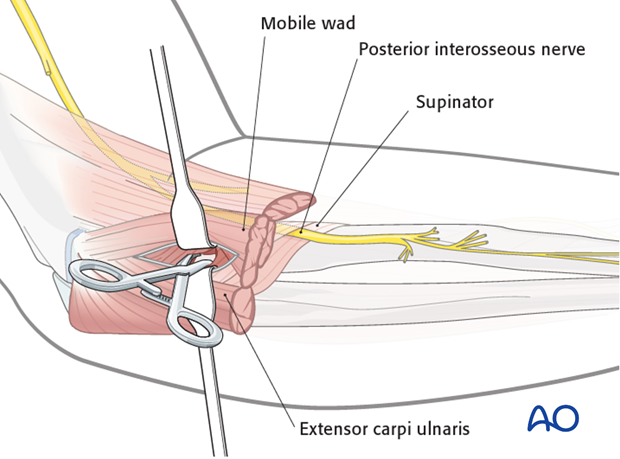
This cross-section illustrates a pin inserted into the proximal 1/3 of the radius.
Be aware of the position of the posterior interosseous nerve.
This pin position is infrequently used in view of the proximity of the posterior interosseous nerve.

4. Safe zone in the distal radius
Be aware of the position of the superficial radial nerve and extensor muscles and their tendons.

This cross-section illustrates the distal 1/3 of the forearm.
Insert the pins under direct vision, using retractors down to the bone, to avoid the superficial branch of the radial nerve.
Make a 1-2 cm skin incision at the site of pin insertion. Use forceps for blunt dissection and retractors to spread the muscle fibers until the bone is reached.
